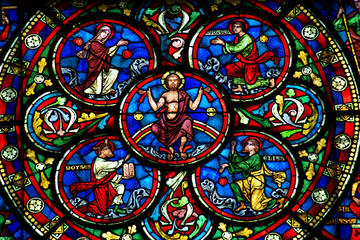Cathédrale St Bénigne
TIME : 2016/2/22 10:51:21

Cathédrale St Bénigne
In Dijon, west of the Ducal palace, looms the twin-towered Cathédrale St. Bénigne - also known as the Dijon Cathedral. This large, Gothic church is the current seat of the Archbishopric of Dijon, as well as a French national monument. Originally a Benedictine abbey, the cathedral is the latest iteration of a series of reconstructions that have occurred over the past 1,500 years.
The cathedral (as well as its previous incarnations) sits upon the alleged resting place of St. Benignus of Dijon, a 3rd-century martyr known for spreading the Christian gospel throughout Gaul. While he was successful in his proselytizing, he was eventually tried, convicted and executed by the Roman authorities. His grave was originally adorned with pagan markings so as to keep his persecutors from further desecrating his memory.
Over the centuries, the original basilica was razed and replaced with a Romanesque cathedral incorporating two-stories of churches (one underground, surrounding the sarcophagus in the crypt) and a tri-level rotunda. In the late 13th century, the structure, already undermined by a fire in 1137, saw irreparable damage when its crossing tower collapsed and ruined the upper church and much of the one underground. In 1325, the current Gothic-influenced building was completed and consecrated.
Today, in addition to its status as a national monument, the church’s abbey serves as a museum. The exhibits here primarily feature Roman and medieval artifacts.
Practical Info
The rotunda of the Cathedral of Dijon was destroyed in 1792, but it was excavated and turned into a crypt in the 19th-century. Today, the tomb of St Bénigne bears a few vestiges of its earlier, pre-Romanesque design.
